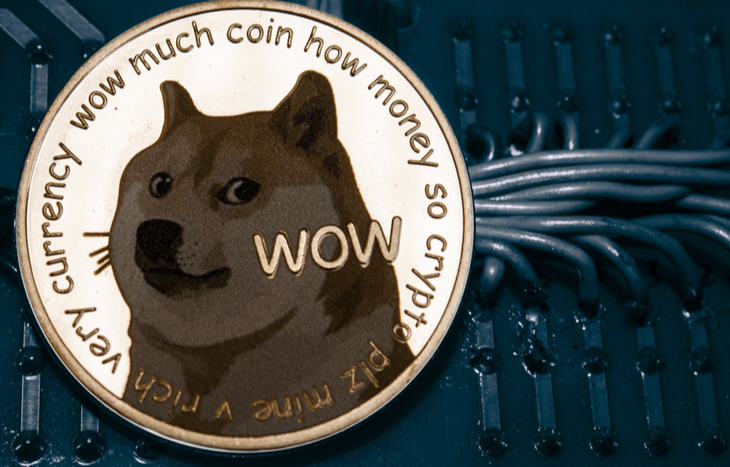Reef Crypto Could Make Trading Much Easier: Should You Invest?

The world of web3 is rapidly expanding and it feels like there are new, exciting projects popping up almost every day. One example is the Holochain, which has gained steam as a decentralized alternative to cloud computing. Now, Reef crypto is emerging as a way to organize defi projects by making it easier to send tokens between blockchains.
REEF currently trades at $0.0114. It has a market capitalization of $208.2 million and a total supply of $18.3 billion. To stay up-to-date on Reef crypto, check out its Twitter page, which has 225,000 followers.

What is Reef Crypto?
Reef crypto is a DeFi project that is built on Polkadot. It aims to increase liquidity between different blockchains by making it easier to send tokens between decentralized and centralized exchanges.
The REEF token powers the Reef ecosystem as its native cryptocurrency. For the sake of this article, these two will be used interchangeably. So far, this project has raised just under $24 million in funding.
To understand that problem that Reef addresses, first remember that there are two types of cryptocurrencies:
- Layer 1 – Native cryptocurrencies: These cryptos have a baseline blockchain that tokens can be built on. The two most popular are Ethereum and Bitcoin. For example, the Ethereum blockchain has its own crypto named Ether. However, it also has thousands of other tokens built on top of its blockchain. Coindesk estimates that there are about 350,000 tokens built on Ethereum in total.
- Layer 2- Tokens built on native crypto blockchains: Every non-native coin that is built on a blockchain is considered a token. For example, Decentraland (MANA), Uniswap (UNI) and Chainlink (LINK) are examples of tokens built on top of Ethereum.
The problem: Tokens that are built on native blockchains are stuck in those respective blockchains. Transferring them usually requires going through a centralized exchange. This process is inefficient and can lead to high transfer fees. As the number of defi projects/tokens grows, this problem will only become more pronounced.
Reef’s solution: Reef crypto aims to be the first aggregator between decentralized exchanges and centralized exchanges. In doing so, it will allow for much more efficient transfers. As I write this, Reef is compatible with Ethereum, Polkadot, BSC, Avalanche and Cosmos.
Benefits of Reef Crypto
Reef crypto is built on Polkadot and uses a proof-of-stake model. In a nutshell, this allows it to offer low transaction costs and send transfers quickly. Since it uses a proof-of-stake model, it also doesn’t require energy-intensive mining. For these reasons, some developers view it as a more efficient alternative to Ethereum.
Reef’s solution will be most valuable for traders. Crypto traders are constantly buying/selling different tokens based on new information. Reef will make it infinitely easier for these traders to buy, sell, and transfer their tokens. However, Reef’s platform also has big implications for NFTs, gaming and defi in general.
Despite being so young, Reef crypto has already done a good job of building out its community. A big part of this is the educational resources that it offers.
Reef’s Hidden Advantage
Education will play a huge role in the development of Web3. This is because (let’s be honest) cryptocurrency is complicated. The majority of the population will probably never understand how crypto works, which is totally fine. But, that doesn’t mean that they can’t benefit from cryptocurrency or dApps.
For example, consider the existing internet. Pretty much everyone can use Google to scan the web and find what they’re looking for. But, most people don’t understand how Google’s algorithm works (I sure don’t). They just know that Google is a valuable tool to help them find answers on the web.
Eventually, using dApps could be as common as using Google. But, before that happens, there needs to be a mass education of the general public. This may sound overwhelming, but it’s no different than the transition to the modern internet in the 1980s-90s.
There are tons of benefits of Web3. It’s just a matter of helping people understand what they are. The better that a new project can educate people, the more people will want to join its community. This is part of the reason why major crypto exchanges offer “Learn to earn” rewards programs.
For Reef crypto, education seems to be a strong suit. It’s one of the few early-stage defi projects I’ve come across that offers a detailed blog. This is a crucial tool in translating the high-level developer talk into easy-to-understand language. This may seem small, but it could actually play a massive role in growing Reef’s ecosystem.
Where Can you Buy REEF?
Binance, Huobi, Bitfinex, FTX and Gate.io all offer Reef.
Should You Invest in Reef Crypto?
The main purpose of the Reef token is to provide liquidity for transfers between different blockchains. If you believe in this value proposition then you should invest in Reef crypto.
As a token holder, you’ll be able to participate in the governance structure of the network. This allows you to vote on things like new features and partnerships. It essentially works the same way as being a shareholder in a company.
It’s important to note that Reef Finance is still a young project, even by crypto standards. Reef first launched at the beginning of 2021. This means that investing in Reef crypto today will come with the standard risks of early-stage ventures. For example:
- High risk: The younger a project is, the riskier it is as an investment. There is still a lot of time left to see how the market responds to its platform. If you invest today, there is a high risk of losing some (or all) of your investment.
- High reward: If Reef takes off then you stand to make a lot of money. It’s not uncommon for popular tokens to rise in value by over 1000X their ICO price. For example, ETH is up over 115,000% all time.
- Delivering on hype: Early-stage projects sometimes rely on “selling the dream.” The founders have to convince investors and early employees to buy into the vision. Then, in the first few years, they have to deliver results to back up their vision.
I hope that you’ve found this article valuable when it comes to learning about Reef crypto! Please remember that I’m not a financial advisor and am just offering my own research and commentary. As usual, please base all investment decisions on your own due diligence.







